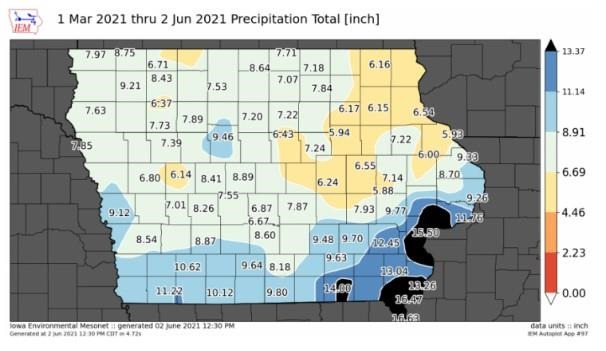By Rebecca Vittetoe
“How much nitrogen (N) has been lost?” is a question we get this time of year, particularly in areas that have received more rainfall. Although most of the state is dry, the southeast part of the state has received above normal rainfall, and there are valid concerns that some N has been lost and additional N could be needed.
While we cannot specifically answer the question of how much N has been lost due to the complexity of the N cycle; below are some approaches we can use in making estimates on the status of N and the potential need for additional N during the growing season.
Late-Spring Soil Nitrate Test
The Late-Spring Soil Nitrate Test (LSNT) can be a useful tool for estimating crop N availability in soils. It measures the nitrate-N concentration in the top foot of soil. The measured N is a combination of nitrate residual from the prior year, mineralized N from soil organic matter, and any fall or early spring applied N that has converted to nitrate. The calibrated LSNT sampling time is when corn is six to twelve inches tall (measured from the ground to the center of the whorl), which usually happens around late May to early June.
The ISU Extension and Outreach publication, Use of the Late-Spring Soil Nitrate Test in Iowa Corn Production (CROP 3140), provides an overview of the LSNT, research on correlation and calibration, specific procedures for using the test, and interpretation of test results.
Springtime Rainfall Totals
Another approach to determine if additional N is needed is to look at spring rainfall totals. Based on data collected in Iowa over a number of years, 76% of the time the rainfall totals are correctly associated with N needs (adequate N or deficit N).
The amount of rainfall that triggers the need for additional N depends upon where you are located in the state. For southeast Iowa (think south of I-80 and east of I-35), if rainfall totals reach or exceed 17.8 inches between March 1 to June 30, you hit the trigger that additional N is needed. For the rest of the state that trigger is hit when rainfall totals exceed 15.5 inches between April 1 and June 30. Note you do not need to wait until the end of June to add up to those totals. If rainfall totals begin to approach these amounts, then be thinking about plans for applying additional N.
The rainfall totals mentioned above have not been reached yet in Iowa, but parts of southeast Iowa should keep a close eye on rainfall totals as totals in some areas are currently over 15 inches for the March 1 to current timeframe already. One handy resource to look at rainfall totals is on the ISU Environmental Meosonet.

Map showing rainfall totals from March 1 through June 2. In southeast Iowa if rainfall totals exceed 17.8 inches at any time during the March 1 through June 30 time period, additional N may be needed. Source: ISU Environmental Mesonet.
If the rainfall criteria are met, how much additional N is needed? The spring rainfall totals are related to the use of suggested economical N rates (MRTN) from the Corn Nitrogen Rate Calculator. Depending upon the amount of N already applied, plan for no more than an additional 50 lb N/acre. This suggestion is assuming that an N rate close to the MRTN rate was already applied. However, if the rate was much less than the MRTN rate, then more than 50 lb N/acre should be considered. If the N rate already applied was above the suggested MRTN rate, then the chance of being short of N is much less than indicated by looking at spring rainfall totals.
Source : iastate.edu